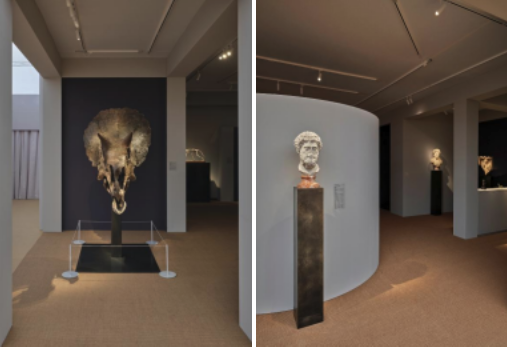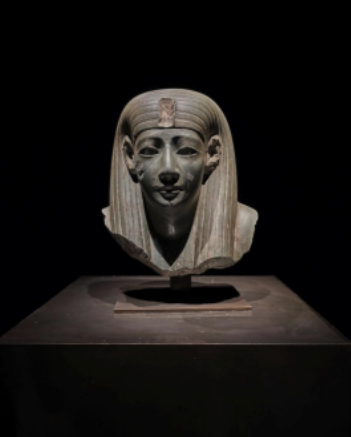Leading London antiquities gallery David Aaron Ltd has unveiled a masterfully carved Egyptian statue, long misattributed and overlooked, now rediscovered and returned to its former glory as the centrepiece of the gallery’s Frieze Masters presentation.
A forensic investigation by David Aaron, together with scientists, conservators and Egyptologists, revealed a true masterpiece of Late Period sculpture - a powerful and enigmatic bust, A Goddess by the Greywacke Master, dated to the reign of Amasis II (570–526 B.C.), Dynasty XXVI.
David Aaron Ltd will present many other significant Classical Greek and Roman, and Egyptian works of art with impeccable provenances, alongside pieces of natural history at Frieze Masters from 15–19 October at The Regent’s Park, London. Highlights include a Sub-Adult Triceratops Skull from the Maastrichtian, Late Cretaceous Period (circa 68 million years ago), discovered in Montana, USA, and a marble Portrait Head of Emperor Marcus Aurelius (circa 170-180 A.D.), in the Emperor’s fourth and final portrait style.

Carved from a fine dark stone called metagreywacke, A Goddess by the Greywacke Master has emerged from decades of obscurity and misunderstanding to reclaim its place as one of the finest Egyptian sculptures of its kind in private hands today.
For over forty years, this striking, elegantly carved head, with serene features and a striated wig, lay hidden from public view in a private collection. When it resurfaced at a Gloucestershire auction in 2022, its oddly shiny surface and unusually preserved nose led some to dismiss it as a later imitation. The earliest known provenance at this time was its appearance in a Christies sale in 1978 (Fine Antiquities, Christie’s, London, 14th June 1978, Lot 387).
As part of their research, David Aaron first uncovered earlier documented provenance of the bust at a Hôtel Drouot sale in Paris, in 1923, with the head photographed in the sales catalogue.
Then, through a detailed study using scientific testing and restoration analysis, the team at David Aaron Ltd uncovered the bust’s fascinating journey: from Wadi Hammamat where the stone was quarried, then damaged through iconoclasm, via the restoration practices of 18th-century Italy to its appearance on the Parisian art market in 1923, and finally its misidentification in modern times.
Salomon Aaron, Director of David Aaron Ltd said: “It is a sculpture that has many stories. One is of ancient Egypt, when master sculptors produced perfected forms of divinity and Royalty, then the resulting iconoclasm that came from the end of the Dynasty and a turbulent change of power. Later the Italian restoration workshops of the 18th century.
Lastly of the early modern art market, where the desire to ‘perfect’ antiquities often led to dramatic interventions, in this case a dark grey overpainting. Now, by removing those additions, we can see the original goddess and Egyptian masterpiece emerge once again.”
Advanced material analysis, including optical petrography, SEM imaging and X-ray spectrometry, confirmed the stone as Egyptian metagreywacke, highly prized in the Late Period for sculptures of royal and divine figures. Recent scholarship has linked the bust to a known corpus of works, attributed to an ancient Egyptian workshop or artist known as the ‘Greywacke Master’.
A meticulous study of toolmarks revealed how a section from the back of the original statue was reworked into a replacement nose during the 18th century, the original having been lost in antiquity. This restoration, although technically impressive, is now massively outdated and would never happen in today’s restoration workshops, and resulted in doubts being cast on the sculpture’s authenticity for a generation.
The goddess, once hidden under wax, pigment, and speculation, has now been professionally de-restored, with the 18th-century nose sympathetically reattached.






